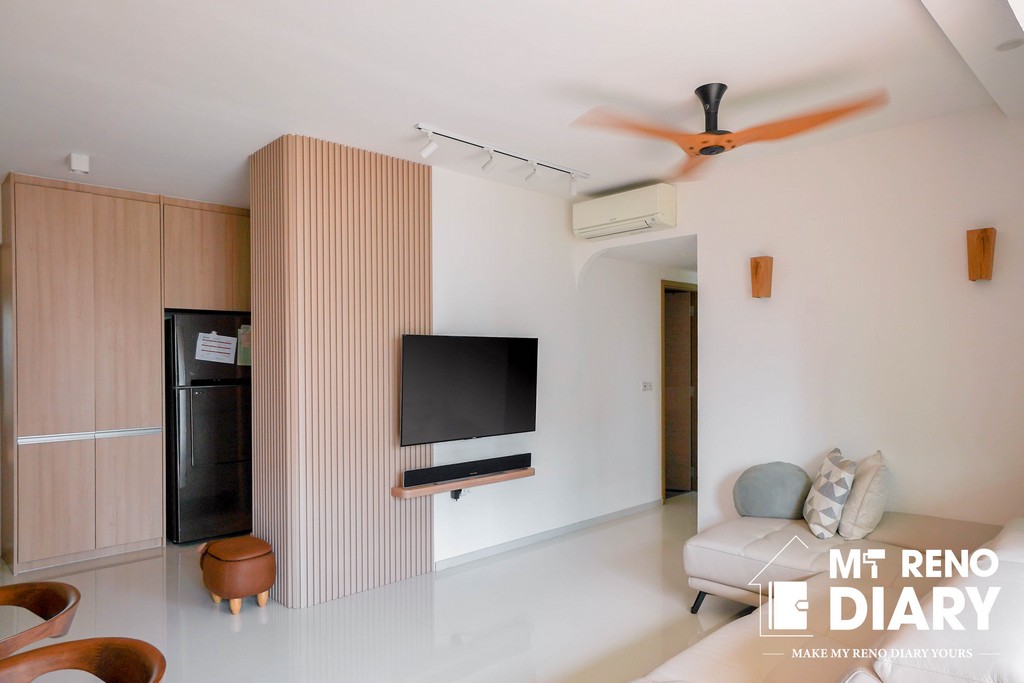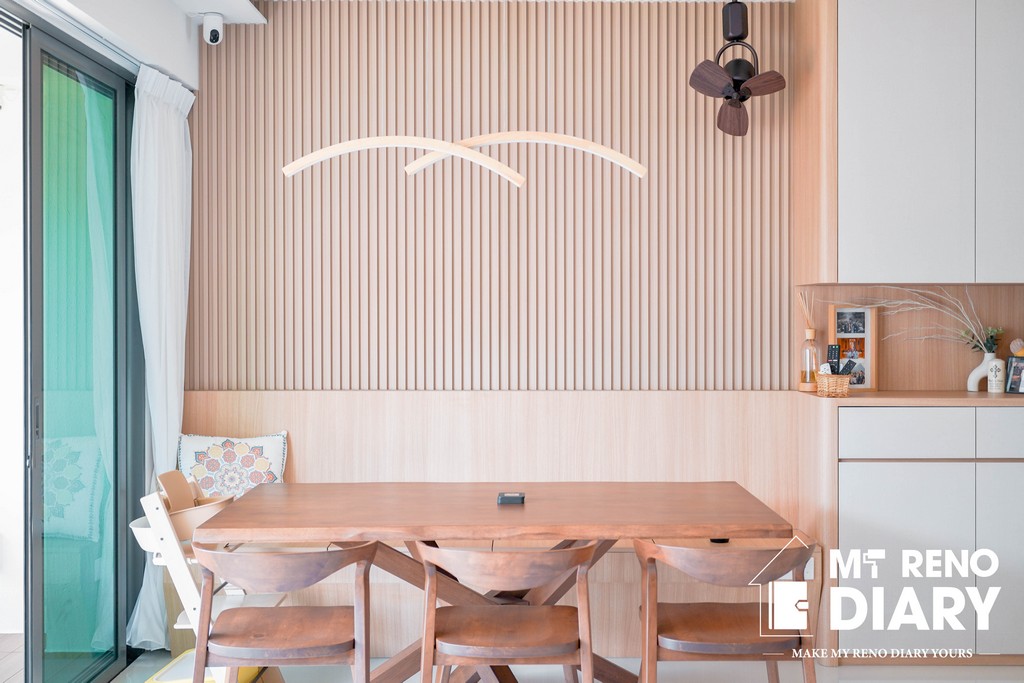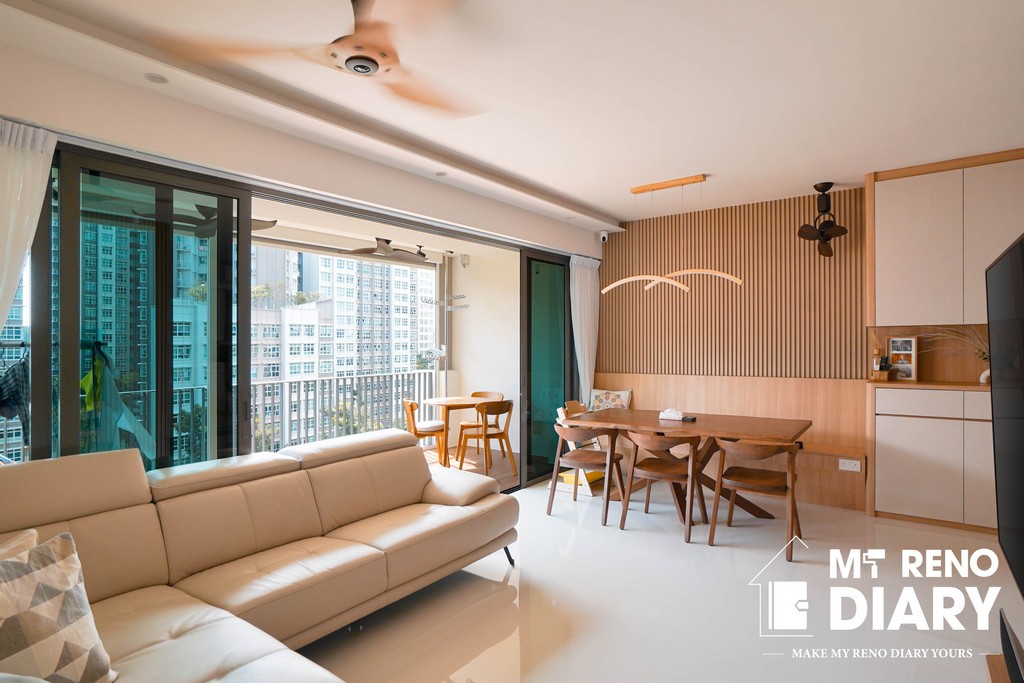Simplify Your Life: Achieve a Functional Home with Muji Interior Design
Does your home feel more like chaos than calm?
Cluttered spaces and disorganised layouts can quickly turn your home into a source of stress. For Singapore homeowners living in compact spaces, achieving a functional yet stylish interior may seem like a challenge. But here’s the good news: the minimalist philosophy of Muji interior design can transform your home into a sanctuary of simplicity and purpose.
At MRD, we believe that your home should serve as a retreat—a space that not only looks beautiful but also works for your lifestyle. Let’s explore how Muji interior design can simplify your life and help you create the functional home you’ve always dreamed of.

What Makes Muji Interior Design Unique?
Muji interior design isn’t just about minimalism; it’s about living intentionally. Inspired by Japanese Zen principles, Muji focuses on decluttering, using neutral tones, and incorporating natural materials to create serene and practical spaces.
Core Features of Muji Design:
- Functionality First: Every piece serves a dual purpose, reducing waste and maximising space.
- Decluttered Living: Less is more—only keep what adds value to your home.
- Neutral Colour Palette: Think whites, beiges, and soft greys for a calming environment.
- Natural Materials: Wood, rattan, and cotton create a warm, inviting feel.
Why Muji Fits Singapore Homes Perfectly:
Given the compact layouts of many HDB flats and condominiums, Muji’s emphasis on organisation and functionality is a natural match.
Step 1: Declutter Your Space
Before you embark on decorating, it’s important to start with a clean slate. Clutter-free spaces form the foundation of the minimalist aesthetic, and this principle is deeply embedded in the Muji philosophy. Muji is all about simplicity, functionality, and creating a calm, peaceful environment. A clean and organized space sets the tone for the serene atmosphere that minimalist design aims to achieve.
Decluttering Tips:
The Rule of Three:
Start by categorizing your items into three categories: “Keep,” “Donate,” and “Discard.” This method helps you to make quick decisions on what you really need and what no longer serves you. The “Keep” pile should consist of items that you use regularly or that bring you joy, while the “Donate” pile can be for things in good condition that you no longer need, and the “Discard” pile is for things that are broken or outdated. By sticking to this rule, you can efficiently eliminate unnecessary items and streamline your space.
Go Vertical:
Maximize your storage by thinking vertically. Tall shelves and cabinets are great for utilizing wall space, especially in smaller rooms. This approach allows you to keep your floors open and create an uncluttered, airy feel. By organizing your items on high shelves or using tall bookcases, you create more floor space for activities and visual openness, which is a core principle of minimalist design.
Hidden Storage:
Incorporate furniture that has built-in storage to keep your space tidy and organized. Opt for pieces like ottomans, coffee tables, or beds with hidden drawers and compartments. These multifunctional furniture items are perfect for storing items you don’t need on a daily basis but still want to keep close by. Hidden storage solutions ensure your home remains clutter-free while maintaining the minimalist aesthetic of clean lines and simplicity.
Cost Estimates for Storage Solutions:
| Item | Price Range (SGD) |
| Modular Shelving Systems | 600–1,500 |
| Hidden Storage Furniture | 300–800 |
| Built-In Wardrobes | 5,000–12,000 |
Step 2: Choose Functional and Minimalist Furniture
Muji furniture is designed with the philosophy of simplicity, functionality, and adaptability in mind. It’s not about filling your space with the most furniture, but about selecting the right pieces that serve multiple purposes and maximize every inch of your home. With a focus on minimalism and practicality, Muji offers furniture solutions that are perfect for both small apartments and larger homes alike.
Platform Beds:
Platform beds from Muji are a perfect choice for compact bedrooms. These beds typically come with built-in storage compartments beneath the platform, making them ideal for homes with limited space. Instead of bulky, traditional storage units, these platform beds offer a sleek, minimalist design that helps you keep your bedroom tidy and organized. You can store everything from extra bedding to seasonal items in the under-bed space, keeping your room free of clutter while still having easy access to essentials.
Multi-Functional Sofas:
For homes that function as both living spaces and workspaces, Muji’s multi-functional sofas are a great option. These sofas are designed for flexibility and comfort, allowing them to serve not only as places to relax but also as additional sleeping arrangements or office seating when needed. Some models even include hidden compartments for storing blankets, pillows, or work essentials. Whether you’re hosting guests or working from home, these sofas adapt to your needs without compromising on style or comfort.
Extendable Tables:
In smaller dining areas, Muji’s extendable tables are a game-changer. These tables offer the flexibility to adjust their size depending on your needs, allowing you to maximize space when not in use and easily accommodate guests or family meals when necessary. The extendable mechanism ensures that the table remains stylish and functional without taking up too much room. It’s the perfect solution for homes that need dining solutions but also want to maintain an open, airy feel.
Step 3: Embrace Neutral Colours
Colour plays a significant role in setting the tone for a Muji-inspired interior. The overall palette is centered around neutrality and simplicity, with light, calming tones that evoke a sense of tranquility and openness. The goal is to create a peaceful, uncluttered environment that feels light and airy, which enhances the minimalist aesthetic.
Walls:
To keep your space feeling open and expansive, stick to light colours on the walls. Soft hues like beige, cream, and light grey are ideal for this, as they reflect light and help create a sense of airiness. These colours serve as a neutral backdrop, allowing the furniture and accents in the room to stand out without overwhelming the space. Keeping the walls light also enhances the feeling of spaciousness, making smaller rooms feel larger and more inviting.
Furniture:
For furniture, opt for pieces in natural wood or muted shades that complement the overall colour scheme. Natural wood tones, such as oak or maple, bring warmth and texture to the space without being too bold or attention-grabbing. Muted shades like soft browns, grays, or off-whites also fit seamlessly into a Muji-inspired interior, contributing to a calm and cohesive atmosphere. The furniture should feel simple, unobtrusive, and timeless, allowing the space to feel effortless and relaxed.
Accents:
To add a bit of depth and character to the room, incorporate subtle accent pieces. For example, a navy cushion can provide a touch of contrast to the neutral tones while still staying within the calming palette. A green indoor plant can introduce a natural element that brings life and freshness to the space without disrupting its minimalist nature. These accents should be understated, adding just enough variety to prevent the space from feeling too monotonous while keeping the overall vibe tranquil and uncluttered.

Step 4: Incorporate Natural Materials
In a Muji-inspired interior, natural materials are not just aesthetic choices—they embody a deeper philosophy of mindfulness and connection to nature. By incorporating these materials into your space, you can create an environment that feels grounded, peaceful, and warm. Muji’s use of natural elements encourages a sense of simplicity and authenticity, allowing the beauty of the materials themselves to shine without overwhelming the space.
Examples of Natural Materials:
Wood:
Wood is a cornerstone of the Muji design philosophy, adding both warmth and texture to any room. It’s perfect for furniture, flooring, or shelving, offering a timeless, organic feel. Natural wood pieces, such as oak, maple, or walnut, blend seamlessly into a minimalist home, grounding the space with their subtle grain and varied tones. Whether it’s a sleek wooden shelf, a simple wooden table, or a wooden floor, this material brings a sense of nature indoors, connecting your home to the outside world in a gentle and understated way.
Rattan:
Rattan is another material that fits beautifully into a Muji-inspired space. Its natural texture and soft, earthy tones make it ideal for various elements around the home. Use rattan for baskets to organize your space or incorporate it into furniture such as chairs or side tables. Its lightweight, woven structure adds a touch of warmth and texture to the interior, while its neutral tones blend effortlessly with other natural materials like wood. Rattan is also versatile for decorative accents—whether it’s a simple rattan mirror or a decorative plant holder, it brings a sense of nature’s simplicity to the home.
Cotton and Linen:
For soft furnishings like curtains, bed linens, and cushions, cotton and linen are excellent choices. Both fabrics are breathable, sustainable, and naturally textured, adding a cozy, tactile quality to your space. Linen, with its slightly rougher texture, evokes a sense of casual elegance, while cotton offers a softer, more relaxed feel. These natural fabrics bring a lightness to the room, enhancing the calm atmosphere that Muji is known for. Whether you’re draping linen curtains by a window or layering cotton cushions on a sofa, these materials help maintain the tranquil, effortless aesthetic of your home.
Cost Estimates for Natural Elements:
| Material | Price Range (SGD) |
| Wooden Furniture Pieces | 1,000–3,000 |
| Rattan Decor Items | 50–300 |
| Linen Curtains | 200–500 |
Step 5: Create a Functional Layout
A Muji-inspired interior isn’t just about creating a visually appealing space—it’s about designing a home that works for your lifestyle. Every corner should be purposeful, allowing you to maximize both function and comfort. With Muji’s minimalist philosophy in mind, here are some layout tips to ensure that your home feels organized, efficient, and adaptable to your needs.
Layout Tips:
Define Zones:
In an open-plan space, it’s essential to create distinct zones for different activities, such as living, dining, and working. You can do this subtly through furniture arrangement, rugs, or even lighting. A well-placed rug can anchor a seating area in the living room, while a light fixture can define the dining space. By using furniture to guide the flow of the room—such as placing a sofa with its back to the dining area—you can establish clear zones without using walls or partitions. This layout promotes a sense of openness and fluidity, which is key in minimalist design, while still ensuring each area serves its intended purpose.
Maximise Natural Light:
Natural light is one of the simplest and most effective ways to enhance a space, and Muji’s aesthetic thrives on bright, airy environments. Position your furniture strategically to make the most of available sunlight. Place seating areas near windows, and avoid blocking light with heavy curtains or bulky furniture. You can also use mirrors to reflect light and amplify the sense of spaciousness in the room. Large windows or light-colored walls can help enhance the natural brightness, making the space feel even more expansive. By focusing on natural light, you’ll create a calm, inviting atmosphere that emphasizes the connection to the outside world.
Flexible Spaces:
Muji interiors are designed to be adaptable, and one of the best ways to achieve flexibility is through multifunctional furniture. Opt for foldable or stackable pieces that can be easily reconfigured to accommodate changing needs. A folding dining table, stackable chairs, or a sofa bed are perfect examples of furniture that can serve multiple purposes in different situations. These pieces are especially useful in smaller spaces, where the ability to quickly switch from one function to another can make all the difference. Whether you’re working, hosting guests, or enjoying quiet time, flexible furniture allows you to transform your home effortlessly.
Step 6: Add Subtle Decor for a Zen-Like Atmosphere
While the core of Muji design leans toward minimalism, it’s the carefully chosen decor pieces that add personality and warmth to a space without overwhelming it. In a Muji-inspired home, every element serves a purpose—whether it’s to create a calming ambiance, bring life into the room, or add a personal touch. Here’s how you can incorporate these finishing touches to make your space feel complete and inviting.
Soft Lighting:
Lighting plays a pivotal role in setting the mood in a Muji-inspired interior. Soft, ambient lighting creates a relaxed and welcoming atmosphere. To achieve this, use table lamps, pendant lights, or LED strips with a warm glow. Choose light fixtures with clean, simple lines that blend seamlessly into your space. Avoid harsh, bright lighting, and instead opt for lighting that offers a gentle, soothing effect. A strategically placed table lamp on a side table or a soft pendant light above a dining area can transform the space, adding depth and warmth to the room.
Greenery:
One of the simplest ways to introduce life into a Muji-inspired home is through the use of greenery. Low-maintenance plants like succulents, peace lilies, or snake plants not only add a pop of color but also contribute to the calming, natural atmosphere that is central to Muji’s aesthetic. Plants with clean, structured leaves fit well within minimalist spaces, maintaining the simplicity of the design while introducing an organic element. Place them in neutral-toned pots that complement your interior’s color palette, and position them on windowsills, shelves, or tables where they can thrive without overwhelming the space.
Personal Touches:
While minimalism focuses on simplicity, a Muji home is still personal. Display a small selection of meaningful items that reflect your personality and interests, but keep them to a curated few. A framed photo of a special memory, a well-loved book, or a handcrafted object can bring warmth and individuality to your home. These personal touches help create a sense of connection and comfort without cluttering the space. Display these items in simple frames or on shelves with clean lines, ensuring they align with the minimalist ethos of having just what you need, but not more.
Cost Estimates for Decor:
| Item | Price Range (SGD) |
| Table Lamps | 100–400 |
| Indoor Plants | 20–100 per plant |
| Decorative Baskets | 50–150 |
Why Muji Design is a Lifestyle Choice
Adopting Muji design principles isn’t just about having a minimalist home—it’s about creating a lifestyle that promotes calmness and intentional living.
By focusing on functionality and simplicity, you’ll not only transform your space but also improve your daily routines and overall well-being.
Make Your Muji-Inspired Home a Reality with MRD
Transforming your space into a functional Muji-inspired home is easier with the right guidance. At MRD, we offer renovation services designed to bring the Muji philosophy to life in Singapore homes.
What would your dream Muji-inspired home look like? Let us help you create it.




